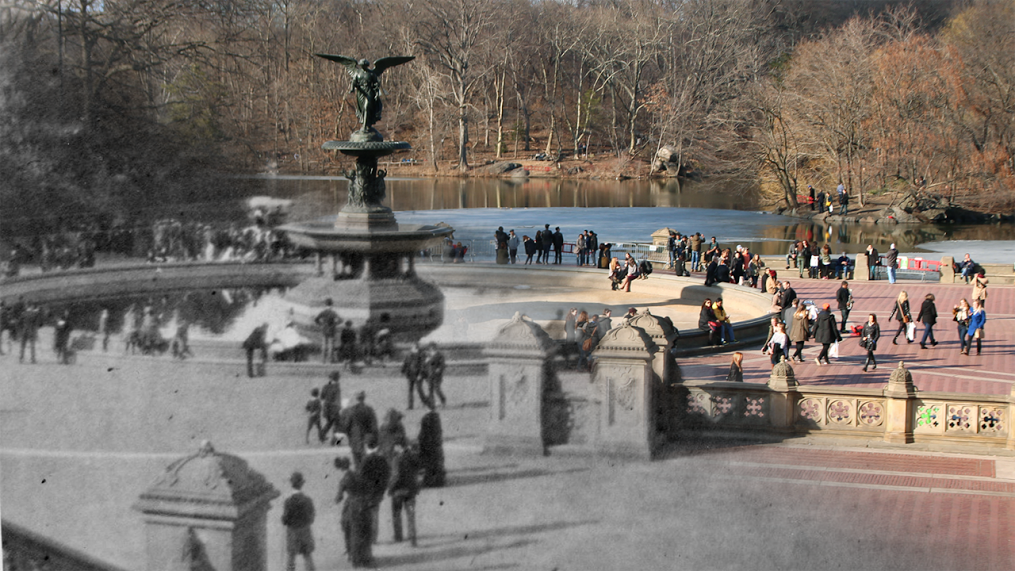Photographer Jordan Liles discusses reimaginging the work of George Bradford Brainerd
 The mix of old and new New York is what photographer Jordan Liles’ most recent project is about. Finding a collection of photographer/inventor/surveyor & civil engineer George Bradford Brainerd’s images taken 140 years ago, Liles literally went out to find the places Brainerd so lovingly photographed and did the same, but now nearly a century and a half later. I had the chance to talk to Jordan Liles about this most unusual of projects and what’s ahead for him personally.
The mix of old and new New York is what photographer Jordan Liles’ most recent project is about. Finding a collection of photographer/inventor/surveyor & civil engineer George Bradford Brainerd’s images taken 140 years ago, Liles literally went out to find the places Brainerd so lovingly photographed and did the same, but now nearly a century and a half later. I had the chance to talk to Jordan Liles about this most unusual of projects and what’s ahead for him personally.
What in your view is the most unique characteristic of George Bradford Brainerd’s images?
I get the feeling from my research that many other photographers mainly did portraits in a studio, but Brainerd concentrated mostly on scenery. He lived at 23 Lafayette Street in Brooklyn, so if you look at Google Maps in relation to a place where he captured several photos such as Borough Hall, you can imagine him walking down the street and enjoying a day in Brooklyn. His own invention of a hidden “detective camera” gave him the ability to capture life in the 19th century without having the people in the frame know that they’re being captured in a photograph; he would often hide his camera in a valise or a book.
Were there any places that you simply couldn’t ‘find’ presently because they were now not possible to get to because of the passage of years?
Yes, there were several places that were difficult to find. In fact, of the roughly 1,800+ photographs available online, I was only able to shoot 25 comparisons.
How far and wide in the New York Area did the project take you?
At first I was only going to concentrate on Brooklyn so I could study the area around where I live. George Brainerd also shot photographs in Connecticut and Long Island, and I did not have a car nor the daytime hours to go on long train rides, so I decided that Brooklyn would be sufficient. After later discovering some of Brainerd’s Manhattan photographs, I decided that it would be good to include a few, such as the ones of Central Park.
Take us through the process of taking the photographs.
First, I would study photographs on the Brooklyn Museum website at the beginning of each work week. I would use my free time at night (outside of work) to match locations with Google Street View, and I would plan out where I’d be biking to, making sure that I had a good order of stops to make so that I could arrive at lots of locations in as little time as possible. I would go out on Saturday and/or Sunday with my camera and tripod. I learned early on following several early shoots that Brainerd usually shot his photos from waist level or below.
What’s coming for you with your moving from New York to San Diego (Liles was literally moving when we spoke,) will you be changing the medium you work in, working on new subjects especially moving out of NYC?
These are interesting questions. I thoroughly enjoy the projects I create and would love to be able to obtain enough money so that I can do them full-time one day. I know that this is the dream of many people who have hobbies that they love.
For now I plan on continuing my career in social media and community management, while still planning new projects on the side, and trying to find ways to perhaps go full-time with my hobby one day. Other than earning YouTube ad revenue which isn’t a whole lot without several thousand daily views across a lot of videos, one idea I have is to tutor people who are looking to learn how to properly use a camera or video editing equipment.
As for the subjects I plan on photographing and documenting here in San Diego, that remains to be seen. I’m still in the process of getting a car, job and apartment. Soon though!
You obviously have an intimate feeling for NYC. What do you take away most now that you are leaving? What do you think you might miss the most (if there is any one thing?)
I think I’ll miss going out on my bike on weekend mornings when the air is cool, but not too cool, and I would set up my tripod in beautiful neighborhoods, line up my lens and see the same places that George Brainerd saw so many years before. Standing in those same spots and knowing that he walked nearby is a cool feeling, and most of all I hope that, because of my efforts, more people know about George Brainerd today than yesterday. I don’t know what events led to me discovering Brainerd or why I felt like I needed to create this project, but I’m glad that I did.
This fascinating exhibit can be viewed in their full sizes on the Brooklyn Museum website. Liles’ offers a special thanks to the Brooklyn Public Library, Tracie Davis and others with the museum, plus New York Public Library, composer Adi Goldstein (composer of the song for the project’s video) and Julie C. Moffat (who wrote her thesis on George Brainerd in the early 1990s) for their contributions to this project.
For more information on Jordan liles, please visit http://www.jordanliles.com/.


